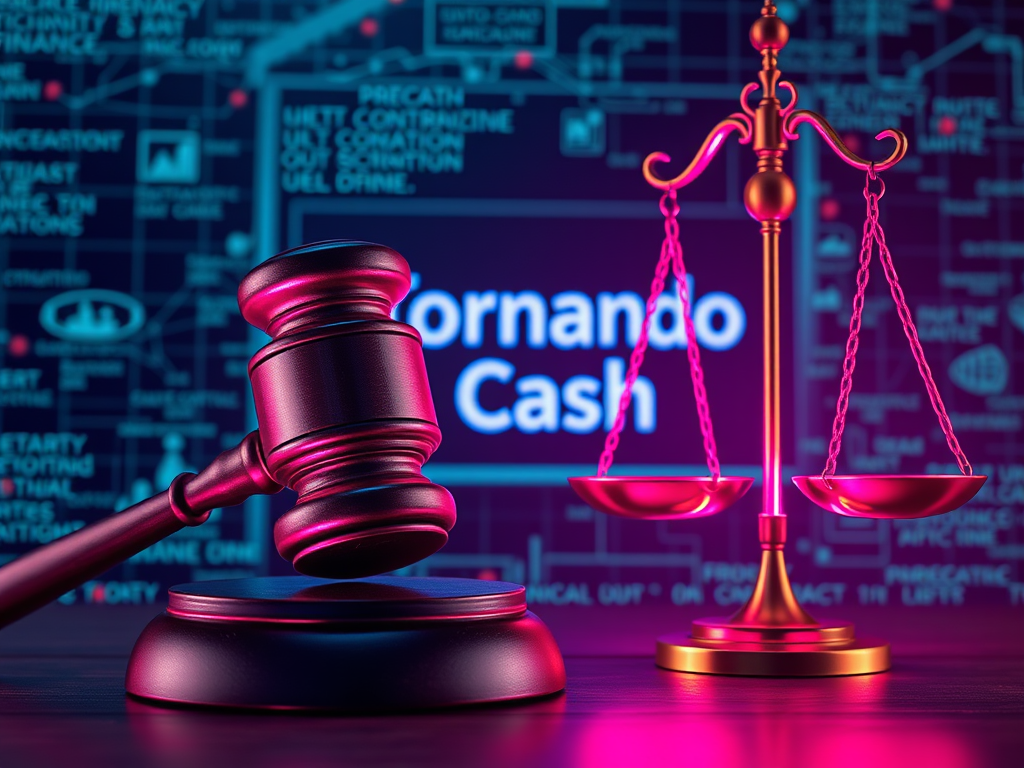As the cryptocurrency landscape continues to evolve at a breakneck pace, the U.S. Securities and Exchange Commission (SEC) finds itself at the forefront of a complex regulatory challenge. In 2024, the agency’s approach to crypto asset classification remains a pivotal factor shaping the future of digital finance, with far-reaching implications for investors, innovators, and the broader financial ecosystem.
The Howey Test: A Framework for Classification
At the heart of the SEC’s methodology lies the Howey Test, established in 1946 to determine whether an asset qualifies as a security. This test, which examines whether an investment involves money in a joint enterprise with the expectation of profits derived from others’ efforts, has become the touchstone for crypto regulation. However, applying this decades-old standard to cutting-edge digital assets has proven contentious and often ambiguous.
Intensified Scrutiny: The SEC’s Enforcement Actions
The SEC’s vigilance in the crypto space has intensified in recent years, reflecting digital assets’ growing importance and potential risks. In 2023, the agency launched 46 enforcement actions against cryptocurrency entities, marking a 53% increase from the previous year and the highest number since 2013. This surge in activity signals a more assertive regulatory stance that has persisted into 2024, with the SEC maintaining its scrutiny of crypto projects and exchanges.
These enforcement actions have targeted alleged violations, including unregistered securities offerings, fraud, and market manipulation. The SEC’s aggressive approach has sent shockwaves through the industry, prompting many crypto firms to reassess their compliance strategies and legal exposure.
A Watershed Moment: Approval of Bitcoin ETFs
Amidst this regulatory crackdown, January 10, 2024, marked a watershed moment for the industry when the SEC approved 11 spot Bitcoin ETFs. This long-awaited decision opened the doors for mainstream investors to access Bitcoin investments more easily through traditional financial instruments. The move is considered a significant development in cryptocurrency, potentially paving the way for greater institutional adoption and market maturity.
However, industry observers caution that this approval should not be interpreted as a blanket acceptance of all cryptocurrencies as non-securities. The SEC’s decision on Bitcoin ETFs was narrowly focused on Bitcoin itself, which the agency previously indicated does not consider a security. For the vast majority of other cryptocurrencies, the regulatory landscape remains uncertain.
The SEC’s Stance: Gensler’s Perspective
SEC Chair Gary Gensler has consistently emphasized that many cryptocurrencies likely fall under the purview of securities laws. His public statements have reinforced the agency’s position that existing regulations apply to new technologies, including digital assets. Gensler’s tenure has been marked by a firm stance on crypto regulation, arguing that investor protection and market integrity must be prioritized in this nascent and volatile sector.
High-Profile Cases: The Coinbase Lawsuit
This hardline approach has led to high-profile enforcement actions, such as the ongoing case against Coinbase, one of the largest cryptocurrency exchanges in the United States. The case was initiated in June 2023 and exemplifies the SEC’s current regulatory strategy. In a significant development on March 27, 2024, a federal judge allowed most of the SEC’s claims against Coinbase to proceed. The court held that the SEC’s allegations about Coinbase’s crypto transactions were sufficient to constitute “investment contracts” under the Howey Test.
This ruling has sent ripples through the crypto industry, potentially setting a precedent for classifying other digital assets. If upheld, it could require many crypto exchanges and projects to register with the SEC and comply with stringent securities regulations, fundamentally altering the crypto market’s landscape.
Industry Pushback: The Debate Continues
However, the SEC’s position has not gone unchallenged. The crypto industry continues to push back against broad classifications of digital assets as securities. Industry stakeholders argue that many cryptocurrencies function more like commodities or utilities and should not be subject to the same regulatory framework as traditional securities. They contend that the unique characteristics of blockchain technology and decentralized networks necessitate a more nuanced regulatory approach.
This debate continues to unfold in courtrooms and regulatory discussions across the nation. Legal experts and industry advocates are closely watching several ongoing cases that could help clarify the boundaries between securities and other types of digital assets. The outcomes of these cases could have far-reaching implications for the future of cryptocurrency regulation in the United States.
Criticism of the SEC’s Approach
Critics have also criticized the SEC’s “regulation by enforcement” approach. Many industry stakeholders argue that more straightforward guidelines and a more collaborative regulatory process would be more beneficial than retroactive enforcement actions. They contend that the current approach creates uncertainty and stifles innovation, potentially driving crypto businesses and talent overseas to jurisdictions with more favorable regulatory environments.
Future Focus Areas: The SEC’s Regulatory Horizon
The SEC is expected to focus on several key areas in its ongoing refinement of crypto asset classification. These include stablecoin regulation as the agency grapples with the potential systemic risks these dollar-pegged cryptocurrencies pose. The SEC is also likely to scrutinize DeFi protocols’ compliance with securities laws, examining whether these decentralized platforms are immune from traditional regulatory frameworks.
Crypto lending and staking programs are another area of focus, with the SEC questioning whether these yield-generating services constitute investment contracts. Additionally, the agency is expected to examine potential securities offerings in NFT marketplaces as the line between digital art and investment products becomes increasingly blurred.
Navigating the Regulatory Landscape: Implications for Investors and Advisors
For financial advisors and investors, navigating this evolving regulatory landscape requires constant vigilance and a deep understanding of the legal nuances surrounding different crypto assets. The SEC has yet to provide definitive securities classifications for all cryptocurrencies, necessitating a case-by-case evaluation of each asset. This uncertainty creates risks and opportunities for market participants, who must carefully weigh the potential regulatory implications of their crypto investments and activities.
Conclusion: The Road Ahead
As the crypto industry matures, the SEC’s stance on asset classification will be crucial in shaping its future. While the approval of Bitcoin ETFs signaled a step towards mainstream acceptance, ongoing enforcement actions and regulatory scrutiny indicate that the SEC remains cautious about the broader crypto market. The agency’s actions in the coming months and years will likely determine how much cryptocurrency can integrate with traditional financial systems and gain wider adoption.
In this dynamic environment, industry participants must stay informed and adaptable. The regulatory landscape of cryptocurrency is still being written, with each enforcement action, court ruling, and policy statement adding new chapters to this unfolding story. The SEC’s evolving approach will continue to be a defining factor in the industry’s trajectory, influencing everything from investment strategies to technological innovation.
As we move into 2024 and beyond, the crypto industry is at a crossroads. The outcome of the ongoing regulatory debates will determine whether cryptocurrencies can fulfill their promise of financial innovation and inclusion or whether traditional regulatory frameworks will constrain them. The only certainty in crypto regulation is that change remains constant, and the industry must be prepared to evolve alongside it.






















